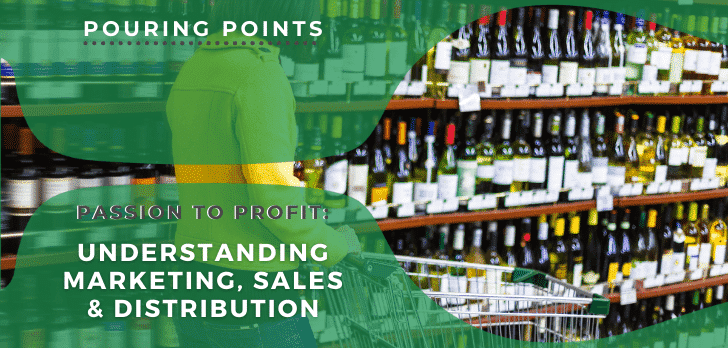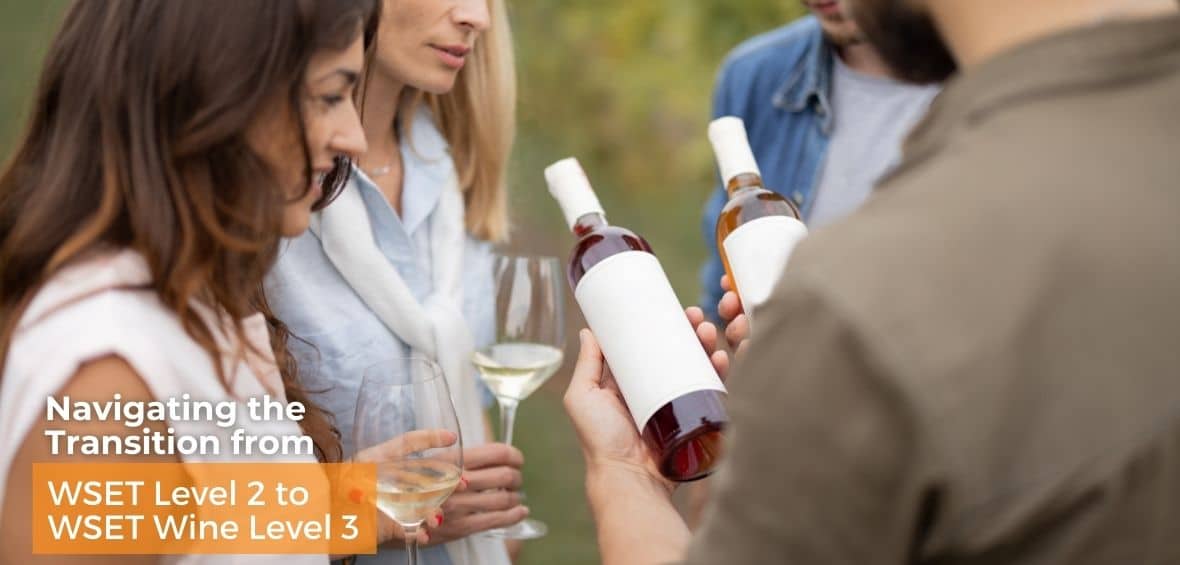4th of 4 part series on the Wine Industry Supply Chain
By Tim Hanni, MW
co-authored & edited by NVWA staff
The final piece of the supply chain can be the most complex. Here’s why you must understand (and plan for) it from the very beginning.
No one says launching a new product is easy. But wine presents an array of obstacles to overcome because of the tangled web of regulations required to distribute and sell it. The paperwork and filings needed to sell wine in a handful of states can be enough to feel like death by 1,000 papercuts.
The interstate beverage industry operates primarily on what is called a three-tier system:
Producer > Distributor > Reseller (restaurant or store)
At every stage there are “gatekeepers” that stand between the winery and consumer — the distributor product manager, distributor sales team, retail or restaurant buyer, retail wine sales person, server or sommelier. A successful wine sales plan includes the strategies to market and sell to ALL of them…as well as marketing to their consumers. And the value proposition you present to the consumer may have little or no value to the gatekeepers.
One of the biggest mistakes is to think that by selling your wine directly to consumers (DtC) you are avoiding the distribution process. In reality you are not eliminating the distributor, you are becoming the distributor! This common misconception can be costly and knowing what the alternatives, costs and logistics encompass is vital for creating a profitable and sustainable business.
Below we break down some of the common pitfalls to avoid when taking wine to market.
DISTRIBUTION
A distributor is a third party who represents your brand for anywhere from 30-50% markup. They sell it through their own salesforce and deliver it to the retailer. While it might sound simple, the process can be mind-numbingly complicated. Distribution laws are set up so that each state has its own regulations, taxes, and requirements.
In some states you are required to have a broker who is bonded, resides in the state, and becomes responsible in case of default on taxes or liabilities incurred by the producer. Other states require a “franchise agreement,” and once you assign your product to the distributor you are locked into an almost unbreakable agreement (whether they sell your wine or not).
For this reason, smaller operations tend to only sell their wine onsite. In this case, distribution involves moving the wine from a “bonded” cage at the winery to the tasting room for consumers to taste and buy. Wine clubs are becoming a popular addition, but producers must pay careful attention to how they operate, sell and ship their wines so that they are in compliance with state and federal regulations and requirements.
Obviously, if you cannot distribute your wines, you cannot sell them! For this reason, a solid distribution strategy must be in place before the first grape is harvested. You must understand HOW you will get to market, THEN calculate the costs associated with that particular distribution model.
This strategy and planning must include the costs associated with doing business in the market PLUS clearly outlined stipulations for sales responsibilities and related costs once the wine is in the market and ready for sale.
SALES
Distribution isn’t the only hurdle producers must overcome. Incorrectly calculating everything that goes into the final retail sales price can sink a winery’s ship. They must make it high enough for their distributors and resellers to have adequate margins, yet low enough to be competitively priced in their sales channel.
Even when the details seem to have been ironed out, negligence in creating a proper contract can result in bill-backs from a distributor for thousands of dollars for sampling, product returns, breakage, event participation and other fees.
When deciding a sales price, producers must first calculate the winery sales price using the following formula:
Fully allocated cost of goods
(total cost to produce the wine and have it labeled and in the box ready to go) +
FOB, or freight on board price
(total cost to arrive at distributor)
The margin between fully allocated cost of goods sold and the winery FOB sales price determines your gross profit on the sales. Your gross profit is NOT the money you will put into your pocket as you also need to create and fund the budgets for sales and marketing, winery profit, and any reserves that will be used for future expansion or investor returns. After all this you will finally arrive at your net profit – the money you will be able to put in the bank as your personal income from the business.
As wine moves through the sales channel, costs start to climb…broker’s fees, freight, insurance and taxes just to name a few. The final sales price (Manufacturer Suggested Retail Price, or MSRP) must include the distributor’s and retailer’s markup. But it gets really complicated when you start factoring in the industry standard discounts and promotions.
A winery often offers discounts or promotions depending on the season, market conditions or showing favor to certain customers. The number to consider for profitability projections is the winery’s average selling price (ASP). But, distributors and retailers also regularly apply discounts, so a producer must consider the ASP in those two channels as well.
To make it even more confusing, a retailer can essentially have four different price levels:
- Manufacturer Suggested Retail Price (MSRP) – the price established by the producer as the final sales price
- Shelf Price or Everyday Low Price (EDLP) – the price set by the retailer as a standard discount
- Discounted/Sales Price – additional discounts a retailer may give for a certain volume or seasonal sales
- Average Selling Price – the average sales price for a particular SKU over a set period of time including discounts and promotional price reductions.
For a more detailed explanation of wine cost and pricing terminology, see this video.
While a winery may have little control over the discounts their partners offer, they must be aware of how their product is selling (and at what price) to evaluate how they are performing in the market, and make projections for future product development.
Given the many layers of costs, producers might be tempted to pad their MSRP for discounts. However it’s actually illegal to set a ridiculously high MSRP and discount it down as a sales strategy.
In Napa Valley Wine Academy’s Business of WIne course students are tasked with trying to find these offenders at their grocery store. It’s not unusual to find wines with a fantasy MSRP of $24.99 that sell everyday for $8.99. (This law is loosely regulated but occasionally these wineries face legal consequences for misrepresenting their pricing.)
To help people navigate these waters, the course offers a detailed Wine Marketing and Sales Workbook, with considerations for establishing promotional, sales and personnel budgets. Students also receive a Wine Pricing Calculator to see the steps and associated costs through every step of the 3-tier distribution process.
MARKETING
Traditionally, marketing is considered when a product is ready for sale. Not true in the wine business. Marketing plans and brand positioning need to inform key product decisions, such as grape sourcing and production models. In other words, know WHO you are selling to and work backward.
That’s not simple given the industry’s many “gatekeepers.” You must have a marketing plan and promotional materials in place for each person in the process…understanding what they need to promote, place and sell your wines. You must also consider the end consumer. (As mentioned these are often two different value propositions).
The Business of Wine course walks students through all of these decisions, offering guidance on:
- Marketing and sales forecasting, considering market demand and opportunities for establishing production volume quotas
- Marketing strategy: defining quantities on an ongoing basis for product based on supply and demand as well as global conditions
- Considerations for product design, labeling and branding (brand management)
- Development and implementation of promotional tactics
- Grape tonnage requirements and wine production volumes
- Packaging logistics and production schedules
- Pricing by market
- Discounts and post-offs
- Design, production, and distribution of promotional and collateral materials
- Advertising and ad calendar
- Public relations activities
Marketing, sales and distribution in the wine industry underscore the importance of having a global understanding of the supply and value chain. It’s intricately complex and connected — one key decision always affecting another.
Whether you are producing 50 cases or 5 million cases you need to know how distribution and sales of our favorite “controlled substance” works. If you don’t, the consequences can be enormous.
Learn More About the Business of Wine Online Course
<<< See the first article in our Passion to Profits series here.















